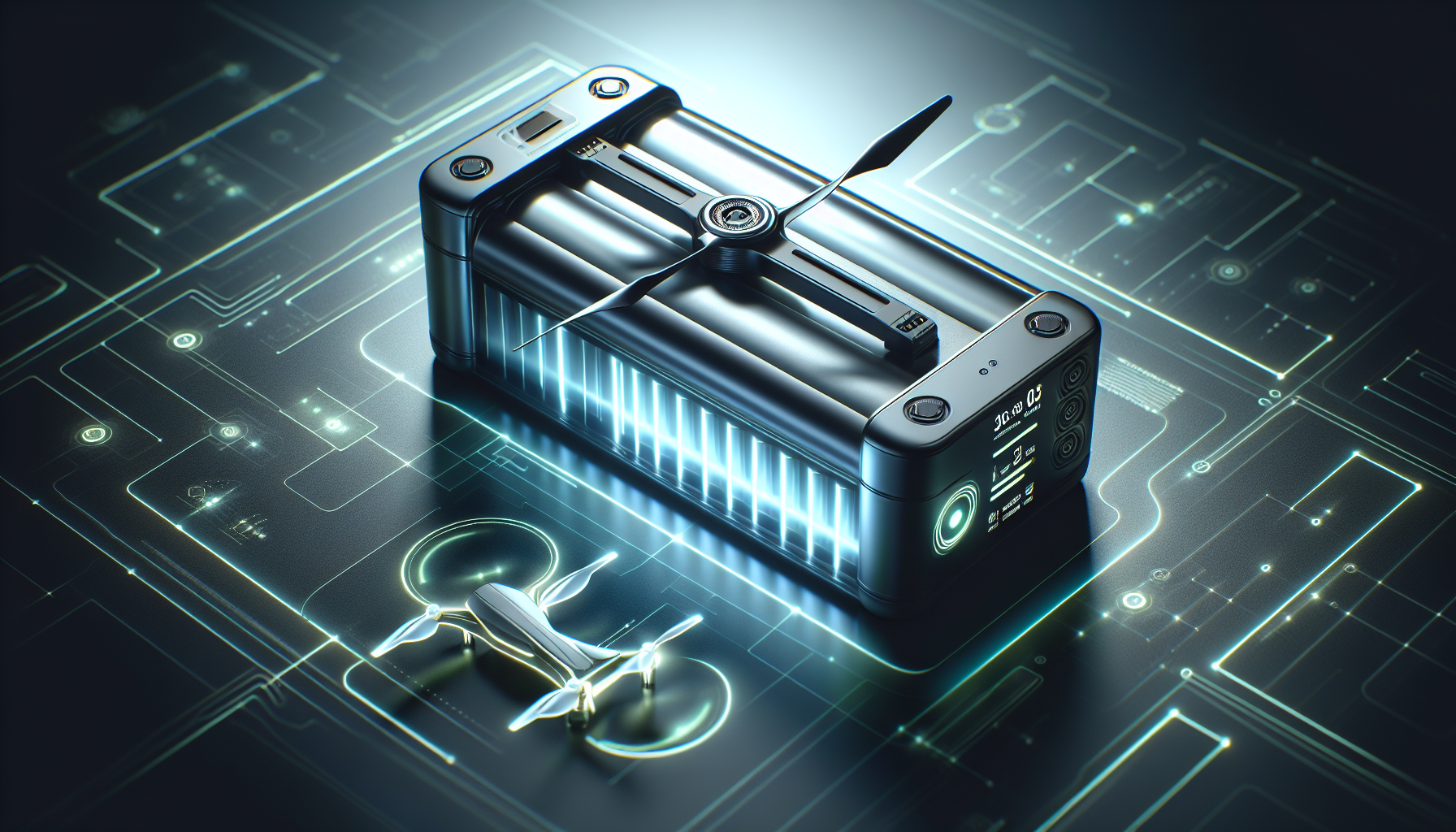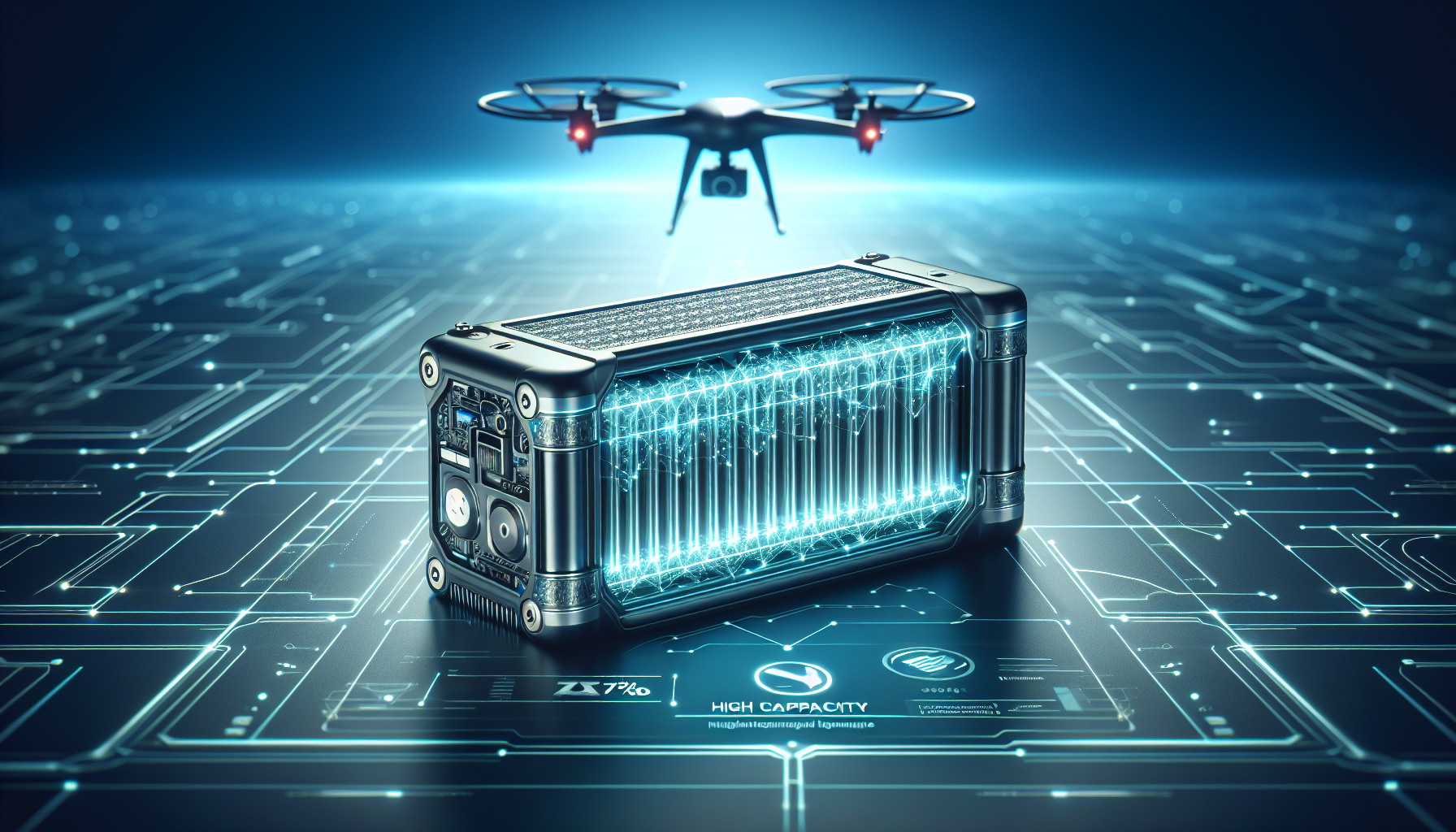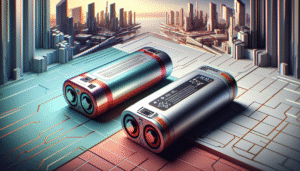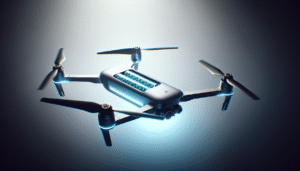Have you ever found yourself pondering the mechanics behind modern drone technology, specifically, how some drones seem to stay aloft longer and appear more reliable than others? Believe it or not, the secret lies in something as seemingly mundane as their batteries. But not just any batteries—smart drone batteries. Imagine your drone soaring through the sky, every maneuver thrilling yet safe, thanks to the power source ticking away at its heart. Let’s chat about how these advanced energy packs contribute both to the enhanced flight times and to safety.

What Are Smart Drone Batteries?
Smart drone batteries are not just regular power packs; they’re the technological marvels that keep your trusty flying companion in the air longer and more safely. Unlike traditional batteries, smart batteries come equipped with embedded electronics to monitor and report status details. This means that they can communicate important data like charge levels, health status, and even temperature conditions back to the drone operator. It’s akin to a little battery genie, whispering updates about how it’s performing.
Key Components of Smart Drone Batteries
To truly understand these technical wonders, we need to take a closer look at what makes them tick. Here, let’s consider the key components:
- Battery Management System (BMS): The BMS is the brain of the operation. It optimizes charge and discharge processes and monitors the overall health and safety.
- Voltage Regulators: These ensure the device receives a consistent voltage supply, crucial for the stable operation of the drone.
- Temperature Sensors: Prevent overheating by monitoring thermal conditions within the battery.
- Communication Modules: Provide real-time data on battery status to the drone controller.
These components contribute to the overall enhancement of drone performance and safety. They create an intelligent feedback loop that goes far beyond just providing power.
How Do Smart Drone Batteries Boost Flight Time?
Who wouldn’t want a drone that stays aloft for longer? Smart batteries contribute significantly to increased flight duration. But how exactly does this happen?
Efficient Energy Management
Smart drone batteries offer efficient energy management through sophisticated monitoring systems. This means that power usage is optimized for the task at hand—a feature reminiscent of how some gym trainers tout precision diets tailored just for you. With real-time data, the battery can adjust the delivery of power to balance consumption with performance. This can often lead to extended flight times by minimizing power wastage.
Improved Power Density
A key advancement in battery technology has been the improvement in power density. A smart battery packs more punch into a smaller space, much like fitting an entire evening’s wardrobe into one carry-on. By housing a greater amount of energy in a smaller form factor, drones can fly longer between charges, pushing your adventures to new bounds.
Dynamic Performance Adjustment
Through real-time data transmission, smart drone batteries help adjust drone performance dynamically. Consider the batteries as your drone’s personal coach, fine-tuning every aspect of its flight to avoid unnecessary strain and energy expenditure. This ensures that the drone isn’t just flying but is flying with optimized use of energy.

Enhancing Safety: The Smart Battery Revolution
Safety is paramount when it comes to drone operation, and smart batteries are pivotal in this arena. These batteries act like vigilant guardians, constantly assessing risk and taking necessary actions to prevent mishaps.
Continuous Monitoring and Feedback
Smart batteries continuously monitor internal and external conditions, identifying potential issues before they become serious. This constant check-up feature is akin to having a personal health monitor that warns you right before anything goes haywire. The data is fed back to the operator in real time, allowing for preventive actions.
Automatic Fail-Safes
Equipped with automatic fail-safes, these batteries can enact safety measures autonomously if they detect a condition that might compromise safety. This might include powering down non-essential systems, reducing performance levels, or issuing a return-to-home command—the equivalent of your drone deciding it needs an immediate timeout for a safe landing.
Overcharge and Overheat Protection
Much like a car with a built-in GPS restricting your route to avoid traffic snarls, smart batteries prevent overcharging and overheating, two conditions that could lead to catastrophic failures. Smart technology within the battery ensures it’s neither overfed nor runs hot, preserving its longevity and safety.
Comparing Smart and Conventional Drone Batteries
It’s important to understand the fundamental differences between smart and conventional drone batteries. Here, let’s briefly compare their features.
| Feature | Smart Drone Batteries | Conventional Drone Batteries |
|---|---|---|
| Communication | Real-time data and updates | Basic charge level indicators |
| Safety Mechanisms | Built-in fail-safes and sensors | Limited or no safety features |
| Energy Management | Optimized energy usage | Standard consumption rates |
| Lifespan | Longer due to intelligent management | Standard, often shorter lifespan |
| Cost | Higher initial investment | Lower initial cost |
The gap between these two types of batteries is expansive, much like ordering gourmet sushi instead of basic canned tuna. In the long term, the investment in smart technology pays dividends in safety and performance.
The Impact on Drone Performance and Usability
The shift towards smart batteries brings a remarkable improvement in drone performance. It’s like trading in your high school jalopy for a sleek new sports car—functional, reliable, and primed for any adventure.
Enhanced Usability
Smart batteries enhance usability by reducing the need for constant monitoring by the operator. Having a system that autonomously provides updates and takes preventative action means less fuss and more focus on the flying experience. This intuitive design blurs the line between usually complex tech and accessibility.
Supporting Amateur and Professional Use
Whether for amateur enthusiasts capturing breathtaking aerial shots or professionals working in industries like construction, agriculture, or filmmaking, smart drone batteries provide the control and reliability required across all skill levels. They democratize drone flying, making it easier and safer for everyone, much like how automatic transmissions made driving accessible to millions who wouldn’t have dared to touch a stick shift.
Future Trends in Smart Drone Battery Technology
In technological arenas, nothing stays the same for long, and that holds true for smart drone batteries as well. While wonderful now, advancements will continue to refine and enhance their capabilities.
Longer Flight Times
With ongoing research and development focused on battery chemistry and efficiency, the future promises even longer flight times. A tangible impact here might involve the use of advanced materials like solid-state electrolytes that promise more efficient and longer-lasting power sources.
Improved Environmental Adaptability
See your drone safely navigate storms like a pro sailor mastering the seven seas? Innovations in smart battery technology may soon be able to adjust power dynamics according to environmental conditions, taking adaptive flight performance to new heights.
Integration with AI and Machine Learning
Integrating Artificial Intelligence and machine learning with drone batteries may sound like part of a sci-fi plot, but it’s fast becoming a reality. These technologies will enable drones to predict and self-optimize their power needs, making the smartest use of their juice. This means your flying partner will be able to learn and improve, much like hiring a dog sled team that trains itself to become faster and more efficient with each run.
Sustainable and Eco-Friendly Materials
The movement towards sustainability isn’t bypassing drones. Future smart battery developments will likely focus on utilizing materials that minimize environmental impact. The chemical constituents are being researched to reduce toxicity and improve recyclability. Perhaps one day, deploying your drone will equate to helping plant a tree.
How to Choose a Smart Drone Battery
If you find yourself intrigued, you might be considering investing in smart batteries for your drone. But how do you go about making such a choice? It’s like picking the right wine—you need to pair it with your drone’s intricacies for that perfect flight experience.
Consider Flight Time Needs
Evaluate how long you typically require the drone to be in the air. Choose a smart battery that offers longer durations if that’s essential, much like selecting a larger bottle for a long dinner party.
Focus on Safety Features
Safety is non-negotiable. Choose batteries equipped with advanced safety features, such as overcharge protection and temperature monitoring. Consider it akin to buying a car with excellent anti-lock braking systems and airbags, just in case.
Look for Compatibility
Ensure the battery is compatible with the make and model of your drone. A good fit means optimal performance, much like a tailored suit rather than a one-size-fits-all ensemble from the bargain bin.
Evaluate Cost vs. Benefit
Smart drone batteries are typically more expensive upfront, but they provide value that traditional batteries don’t. It can be tempting to go for the cheapest option, but think of savvy investment; much like upgrading your phone, once you go smart, there’s no looking back.
Conclusion
There you have it, my friend—a detailed look into the world of smart drone batteries and their transformative impact on flight time and safety. If you’ve ever been caught on a breezy afternoon watching your drone navigate effortlessly through the sky, now you know the hidden orchestrator behind the scenes. As we embrace this era of smart technology, these batteries show how innovation can enhance our connection with the technology we cherish, not just making it more efficient but also more enjoyable. Here’s to long flights, safer landings, and fewer worries.


